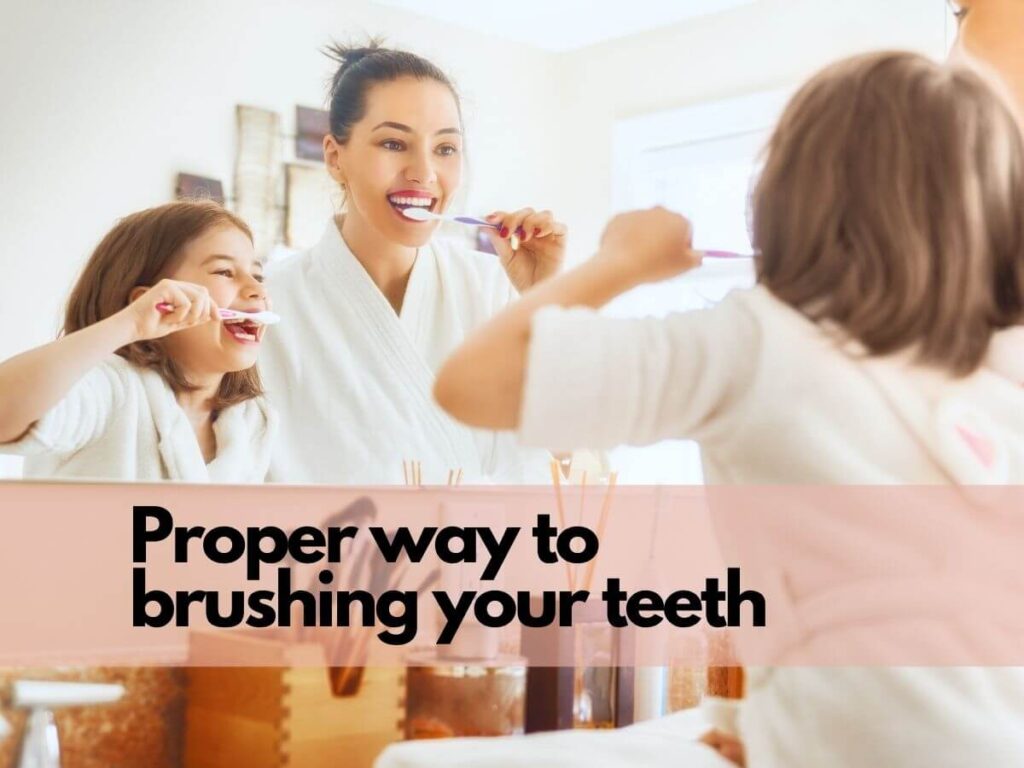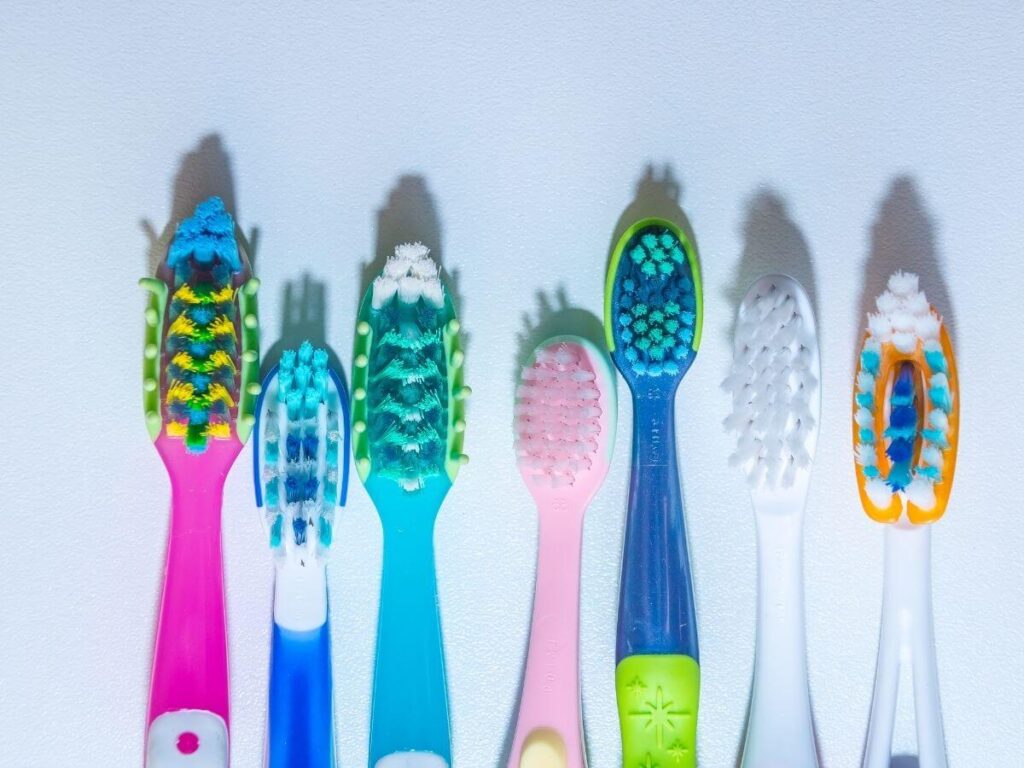
Improper brushing techniques are a common problem and may result in tooth decay. Many of our patients brush their teeth twice per day, but we can often see that these practices do not always include proper brushing techniques after a dental exam.
Imagine brushing your teeth like walking your dog. You can either let them out very quickly to “get the job done,” or take them twice a day on a long walk. Better yet, go to the dog park! Of course, with these longer walks and exercise options, your dog will get healthier and happier. The same applies to brushing your teeth and preventive dental care. Brushing longer with the proper techniques will prevent unwanted dental treatments, tooth decay, and gum disease.
Maintaining good oral and dental health is vital to your overall well-being. By making just a few minor changes in your brushing habits, you can drastically change the health of your teeth and avoid costly dental work months down the road.
Brush your teeth for two minutes. It’s that simple. In some cases, we typically brush an average of 46 seconds and do a “drive-by” brushing where we think we brush every surface of the tooth and call it a day. If you’re not brushing for two minutes or more, you’re not making sure every part of the tooth is brushed.
The best way to ensure that we have brushed all corners of our mouth is to follow the same pattern for each section of your mouth. Brushing the chewing surfaces, both your teeth’ outer surface and the inner surface will ensure all areas are covered. The pattern where you brush first doesn’t matter as long as each section gets the same brushing during the two minutes. When brushing, hold your toothbrush at a 45-degree angle against your gumline. Followed by gently brushing in a circular motion from where the tooth and gum meet to the chewing surface in short (about half-a-tooth-wide) strokes. We don’t want to brush too hard as that can cause receding gums, tooth sensitivity, and loose teeth.
Now that you’ve brushed your teeth, there’s only one more step. Brushing your tongue! This can be done with a toothbrush or a tongue scraper. The latter is super cheap (like $3) and does wonders for making sure you kill all the bacteria that’s hiding in the small crevices on your tongue surface.
Run your tongue over all the surfaces of your teeth. If your tongue can glide smoothly over your teeth with no rough patches, food particles, or buildup, you’ve done a good job of brushing. If some areas still feel a bit rough, repeat the process to ensure thorough tooth coverage. When the plaque or buildup stays on your teeth longer than it should, it can lead to many problems. These include dental caries, gingivitis, and periodontitis.

While picking the “right” toothbrush depends on personal preference, we typically recommend using soft bristles for several reasons. A soft bristle brush is extremely effective at removing plaque from your enamel and is more efficient in cleaning along the gum line than a hard bristle brush.
An electric toothbrush is another option if you don’t want to pick up a manual toothbrush. Unlike ordinary toothbrushes, the electric toothbrush is a great alternative that offers greater plaque removal and a more comfortable hygiene experience than a manual toothbrush alone. The brush head rotates and vibrates independently to remove plaque from those hard-to-reach spots.
A toothbrush is only as good as the toothpaste that brushes alongside it. The American Dental Association (ADA) recommends using fluoride toothpaste to protect your oral health. Toothpaste with fluoride will help to re-mineralize your teeth, remove surface stains, and strengthen tooth enamel. Over time, brushing your teeth with fluoride toothpaste can help to strengthen your teeth and reduce dental plaque build-up.
The American Dental Association assigns its Seal of Acceptance to toothpastes that pass its tests for safety and effectiveness. Any product that can contribute to tooth decay will not be given the ADA seal.
Brushing is a vital component of daily dental hygiene, but it only deals with large pieces of food debris and leaves smaller bits behind. Flossing reaches between the teeth and removes trapped food particles from the surfaces where brushing can’t reach. Floss once a day to maintain healthy gums and a clean smile.
Poor oral hygiene can result in inter-dental decay, halitosis (bad breath), gum line recession, oral disease, tooth decay, and eventually tooth loss. By practicing good oral hygiene daily, you can avoid these problems and keep a healthy mouth.
One of the best ways to make sure that your teeth are healthy and clean is to schedule an appointment for a full mouth exam and cleaning. Your friendly local general dentist can examine your pearly whites, detect the presence of gum disease or cavities, and explain how you can have a healthier mouth.
During your appointment, your dentist will perform an exam and tell almost immediately the state of your oral health. If you tend to miss spots when brushing or flossing, you’ll notice a buildup of plaque on these surfaces that will signify where you should spend more time brushing. By visiting us two times a year for your general exam and cleaning, you’ll get a better understanding of your oral hygiene and prevent future dental problems.
For a local dentist in Fairview, TX, contact Sloan Creek Dental today! As a family dental office, we provide cleanings, fillings, oral surgery, emergency services, Invisalign, and much more for the entire family.
We firmly believe that the internet should be available and accessible to anyone, and are committed to providing a website that is accessible to the widest possible audience, regardless of circumstance and ability.
To fulfill this, we aim to adhere as strictly as possible to the World Wide Web Consortium’s (W3C) Web Content Accessibility Guidelines 2.1 (WCAG 2.1) at the AA level. These guidelines explain how to make web content accessible to people with a wide array of disabilities. Complying with those guidelines helps us ensure that the website is accessible to all people: blind people, people with motor impairments, visual impairment, cognitive disabilities, and more.
This website utilizes various technologies that are meant to make it as accessible as possible at all times. We utilize an accessibility interface that allows persons with specific disabilities to adjust the website’s UI (user interface) and design it to their personal needs.
Additionally, the website utilizes an AI-based application that runs in the background and optimizes its accessibility level constantly. This application remediates the website’s HTML, adapts Its functionality and behavior for screen-readers used by the blind users, and for keyboard functions used by individuals with motor impairments.
If you’ve found a malfunction or have ideas for improvement, we’ll be happy to hear from you. You can reach out to the website’s operators by using the following email
Our website implements the ARIA attributes (Accessible Rich Internet Applications) technique, alongside various different behavioral changes, to ensure blind users visiting with screen-readers are able to read, comprehend, and enjoy the website’s functions. As soon as a user with a screen-reader enters your site, they immediately receive a prompt to enter the Screen-Reader Profile so they can browse and operate your site effectively. Here’s how our website covers some of the most important screen-reader requirements, alongside console screenshots of code examples:
Screen-reader optimization: we run a background process that learns the website’s components from top to bottom, to ensure ongoing compliance even when updating the website. In this process, we provide screen-readers with meaningful data using the ARIA set of attributes. For example, we provide accurate form labels; descriptions for actionable icons (social media icons, search icons, cart icons, etc.); validation guidance for form inputs; element roles such as buttons, menus, modal dialogues (popups), and others. Additionally, the background process scans all of the website’s images and provides an accurate and meaningful image-object-recognition-based description as an ALT (alternate text) tag for images that are not described. It will also extract texts that are embedded within the image, using an OCR (optical character recognition) technology. To turn on screen-reader adjustments at any time, users need only to press the Alt+1 keyboard combination. Screen-reader users also get automatic announcements to turn the Screen-reader mode on as soon as they enter the website.
These adjustments are compatible with all popular screen readers, including JAWS and NVDA.
Keyboard navigation optimization: The background process also adjusts the website’s HTML, and adds various behaviors using JavaScript code to make the website operable by the keyboard. This includes the ability to navigate the website using the Tab and Shift+Tab keys, operate dropdowns with the arrow keys, close them with Esc, trigger buttons and links using the Enter key, navigate between radio and checkbox elements using the arrow keys, and fill them in with the Spacebar or Enter key.Additionally, keyboard users will find quick-navigation and content-skip menus, available at any time by clicking Alt+1, or as the first elements of the site while navigating with the keyboard. The background process also handles triggered popups by moving the keyboard focus towards them as soon as they appear, and not allow the focus drift outside of it.
Users can also use shortcuts such as “M” (menus), “H” (headings), “F” (forms), “B” (buttons), and “G” (graphics) to jump to specific elements.
We aim to support the widest array of browsers and assistive technologies as possible, so our users can choose the best fitting tools for them, with as few limitations as possible. Therefore, we have worked very hard to be able to support all major systems that comprise over 95% of the user market share including Google Chrome, Mozilla Firefox, Apple Safari, Opera and Microsoft Edge, JAWS and NVDA (screen readers), both for Windows and for MAC users.
Despite our very best efforts to allow anybody to adjust the website to their needs, there may still be pages or sections that are not fully accessible, are in the process of becoming accessible, or are lacking an adequate technological solution to make them accessible. Still, we are continually improving our accessibility, adding, updating and improving its options and features, and developing and adopting new technologies. All this is meant to reach the optimal level of accessibility, following technological advancements. For any assistance, please reach out to